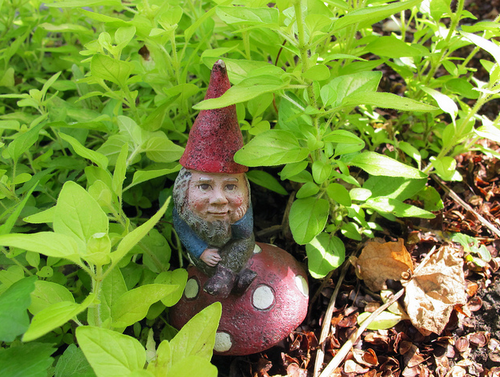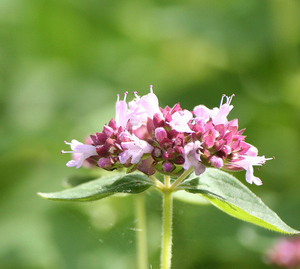
Oregano (Origanum vulgare) is a hardy perennial herb with woody stems and fragrant leaves. It is a very close relative of marjoram and sometimes their Latin names are confused (marjoram is Origanum majorana). Note that sometimes the plant behaves like an annual and dies off, especially when frost gets to it.
Originally from the Mediterranean region, it has long formed a part of Italian and Greek cuisine. Many people are familiar with its use on pizzas and in Mexican chilli dishes.
Growing oregano[edit | edit source]
- Grow from seed in seed boxes or the ground, or grow from seedlings. Oregano can be grown in the garden or in containers indoors, on a windowsill.
- Choose an area with well-drained soil in full sun. The soil can be poor and stony provided it drains well.
- Plant in warm soil, in mid to late spring (depending on your location). It can be planted in pots and transplanted if needed. The addition of dolomite or ground limestone may help where the soil is deficient.
- Sprinkle seed on top of a prepared seed bed or pan. Only firm the seed––do not cover deeply.
- Keep well watered. Don't allow it to dry out.
- After flowering, cut back the flower stalks. The plant will become more woody over the years and needs to be replaced about every three years.
- Oregano can be easily divided.
Problems for oregano[edit | edit source]
Oregano may not tolerate frost; either cover it or move containers indoors.
Using oregano as a culinary herb[edit | edit source]

Oregano can be used fresh or dried. Greek cooks seem to prefer it dried. Here are some possible uses:
- Greek and Italian cuisine.
- Mexican dishes with chilli powder.
- Meat dishes.
- Egg and cheese dishes.
- Vegetable dishes.
- Salads.
- Soups.
- Sauces.
Dried oregano works well with beans, eggplants (aubergine), tomatoes, zucchini (courgettes) and rice dishes.
Medicinal use of oregano[edit | edit source]
There are quite a few medicinal uses, such as:
- Cough treatment.
- For chest infections.
- Colic.
- Indigestion.
- Treating laryngitis.
Avoid medicinal use during pregnancy.